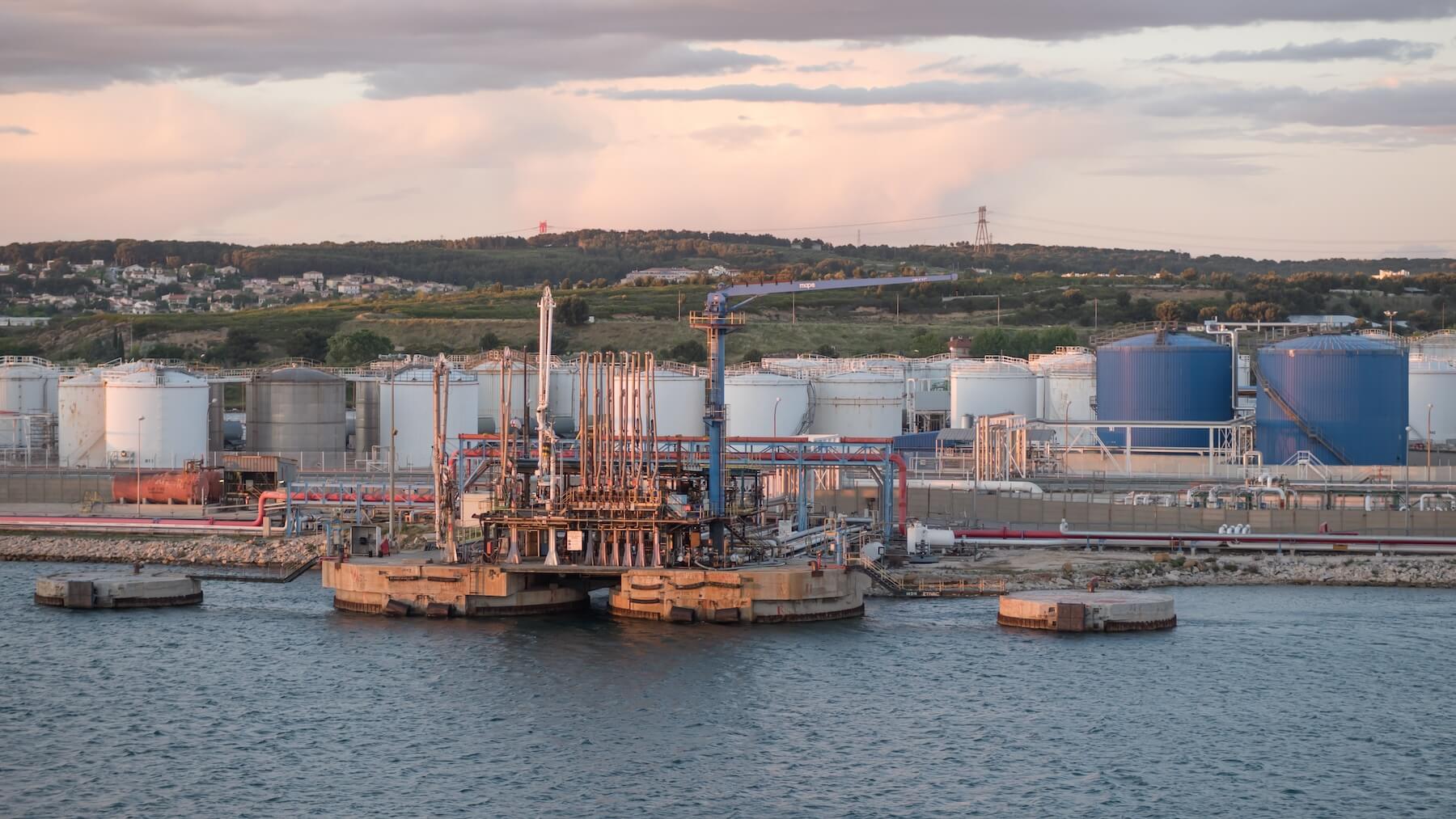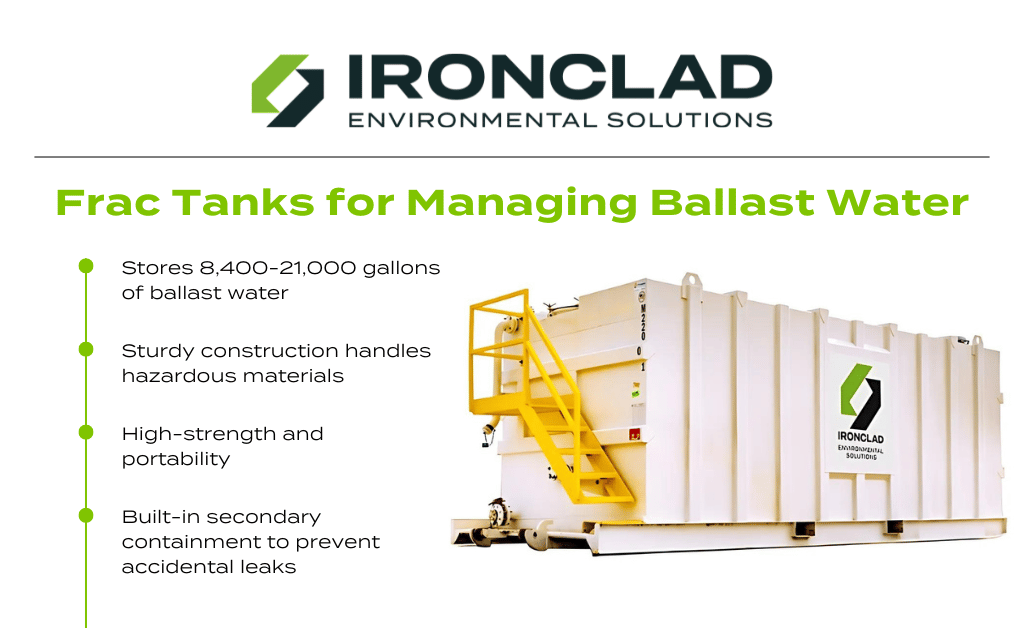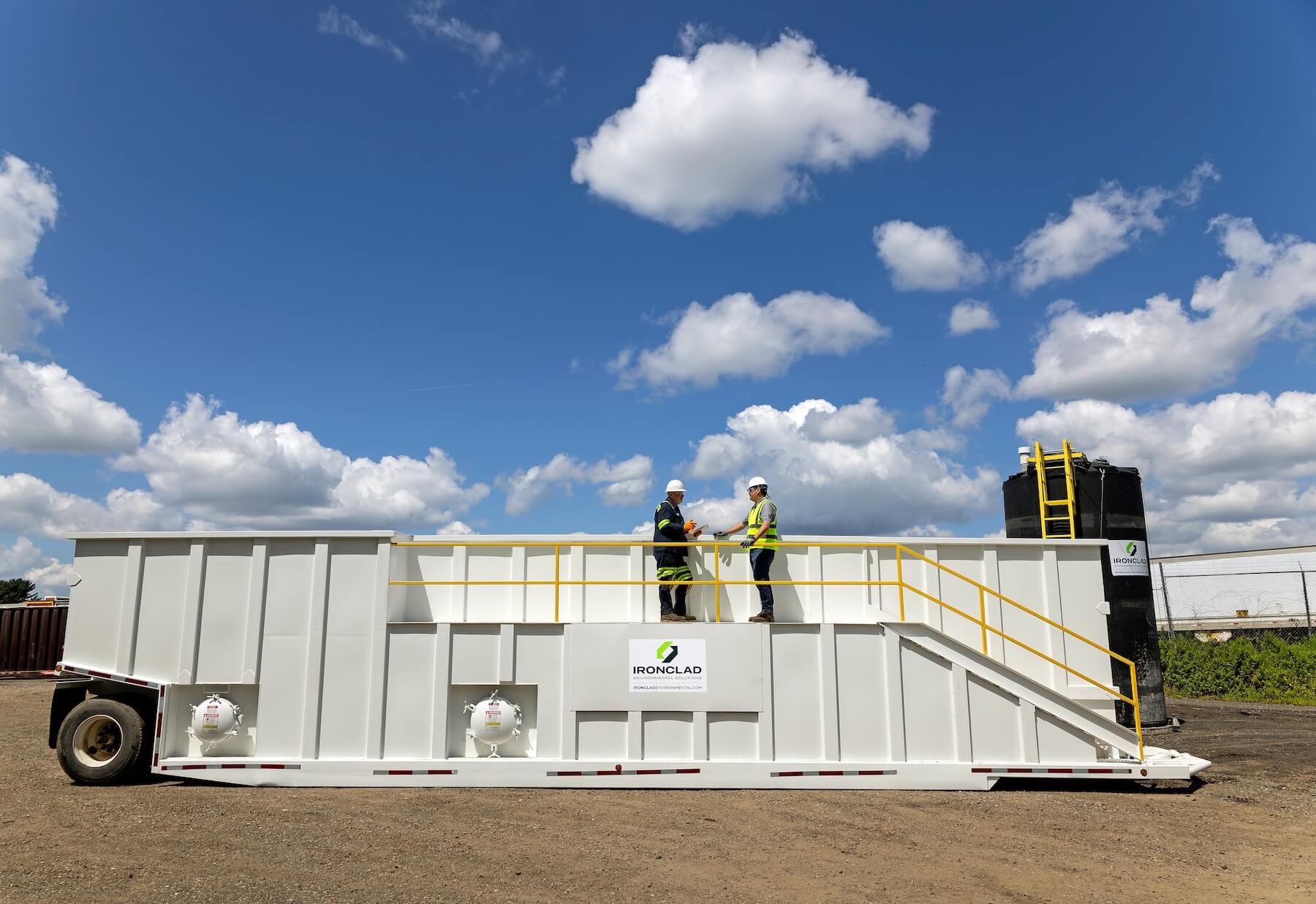Managing Ballast Water Treatment Efficiently
Efficiently managing ballast water when ships come into port is critical to preventing environmental contamination and complying with industry regulations. Without proper storage and treatment, ballast water can introduce invasive aquatic species and pollutants into the ecosystem.
Frac tanks provide an effective solution here, offering secure, portable storage and treatment for ballast water at shipyards and marine terminals.
The Importance of Efficient Ballast Water Management
Ballast water is crucial for maintaining a ship's stability and operational safety. Ships take on or release ballast water to balance weight and ensure safe navigation during a voyage, particularly when cargo is loaded or unloaded. This process is integral to maritime operations, but without proper management, the water can carry environmental threats.
Risks of Improper Ballast Water Discharge
According to the IMO, "the spread of invasive species is now recognized as one of the greatest threats to the ecological and the economic well-being of the planet, and one of the main drivers of biodiversity loss."
If you discharge ballast water incorrectly, it can introduce aquatic invasive species and harmful pollutants into the environment. These invasive species can outcompete natural marine life, disrupting biodiversity. Pollution from ballast water can also degrade water quality, leading to long-term environmental harm.
Ballast Water Treatment Systems
A BWT system is designed to prevent these risks by treating water before it's discharged into a new environment. These systems typically involve filtration systems, UV radiation, or chemical treatment that neutralizes or eliminates the aquatic organisms in ballast water.
The chosen system depends on the ship type and available space in the ballast tank, ensuring that the discharged water meets environmental safety standards and protects marine ecosystems from contamination.

Regulations for Ballast Water Treatment and Management
The International Maritime Organization (IMO) is a United Nations agency responsible for regulating maritime transport in the shipping industry. One of their key initiatives is the Ballast Water Management Convention. This treaty requires vessels to implement systems to treat ballast water before discharging it, in order to prevent the spread of harmful species.
The U.S. Coast Guard also enforces strict standards for managing and treating ballast water. These regulations mandate that ships install and operate a certified ballast water treatment system. This requirement makes effective management a top priority for ship owners.
Challenges Encountered in Ballast Water Treatment
Treating ballast water can be challenging due to the varying water qualities and the presence of different marine life in each port. Ships may take on ballast water from freshwater sources, coastal areas, or deep-sea regions, each carrying a unique mix of marine organisms, sediments, and pollutants. This variability makes it difficult to apply a one-size-fits-all treatment approach, as systems must be flexible enough to address the specific water conditions of each port.
Long-Term Storage Issues
In some cases, ballast water may need to be stored for extended periods until they are tested for biological contaminants, treated, and prepared for reuse or disposal. Managing this process requires careful planning to ensure environmental safety and regulatory compliance.
We work closely with clients to develop solutions that meet these long-term needs. Our assets ensure safe storage and handling of ballast water while maintaining full compliance with industry standards.
Compliance and Operational Challenges
Vessel owners face significant challenges in staying compliant and minimizing disruptions to operations. The cost of installing and maintaining ballast water treatment systems can be substantial, and making sure these systems function properly across different conditions adds another layer of complexity.
They must also keep up with the United States Coast Guard and IMO's regulations to avoid penalties and protect marine environments. These regulations are internationally recognized, making them a critical standard for port authorities and shipping companies around the world.

Essential Equipment for Managing Ballast Water
As mentioned, frac tanks are a reliable and accessible solution for the temporary storage of ballast water. These tanks provide immediate support for industrial waste management, especially in shipyards and marine terminals where large volumes of water need to be contained and treated before discharge.
RENT A FRAC TANK FROM IRONCLAD ENVIRONMENTAL TODAY
What Exactly are Frac Tanks and What is their Capacity?
Frac tanks are high-capacity, portable steel tanks built to handle large volumes of liquids. Typically, they come in sizes ranging from 8,400 to 21,000 gallons of liquid, providing ample storage for even the largest ships. Multiple frac tanks may be daisy-chained together to increase storage capacity if greater volumes of storage are required. Their sturdy construction ensures that they can safely handle hazardous materials, such as contaminated water, while also withstanding the harsh conditions found in industrial environments.
Frac tanks are extremely versatile, as they come in different configurations to meet specific project needs:
- Mix tanks
- Closed top tanks
- Open top tanks
- Double wall tanks
- Open-top weir tanks
- Gas buster tanks
Frac Tanks vs. Traditional Storage Methods
Frac tanks offer several advantages over traditional storage methods, including:
- Portability: Easily mobile and adaptable to the changing needs of ship operations.
- Cost-Effectiveness: A more affordable solution compared to permanent storage options, especially for short-term projects or project-specific needs.
- Eco-Friendly: Designed for easy cleaning and reuse, helping to reduce environmental impact and disposal costs.
Overall, these tanks offer the convenience, flexibility, and reliability needed to ensure environmental compliance and maintain operational efficiency.
Ironclad Environmental's Role in Ballast Water Management
At Ironclad Environmental, we provide comprehensive support for ballast water management systems. Our team handles every aspect of the process, from delivering and setting up the equipment to ensuring that your project complies with International Maritime Organization requirements. With our many years of experience, we understand the unique challenges that come with managing ballast water, and we are committed to delivering solutions that prioritize safety, efficiency, and environmental protection.
Aside from providing the equipment, we work closely with clients to develop long-term strategies for ballast water management and compliance. As our partner, you can focus on your core operations while knowing that your ballast water is being handled with precision and care.

Rent Frac Tanks from Ironclad Environmental
Our frac tanks are the ultimate solution for managing ballast water effectively. They store up to 21,000 gallons, are easily portable, and are built with heavy-duty materials, ensuring the safe containment of hazardous and non-hazardous liquids.
Our 21,000-gallon closed-top and 8,400 closed-top tanks feature an epoxy coating on the interior, designed to prevent contamination and facilitate easy cleaning. Double-wall tanks also provide an additional layer of protection, safeguarding against accidental leaks and ensuring secure containment.
Request a Quote
Whether you're dealing with large-scale operations or managing smaller projects, our frac tanks are the right solution for storing and treating ballast water. Request a Quote to secure your frac tank rental - let us handle your ballast water needs effectively.
Resources:
- International Maritime Organization. https://www.imo.org/en
- National Invasive Species Information Center. https://www.invasivespeciesinfo.gov/
- U.S. Coast Guard. http://www.uscg.mil/